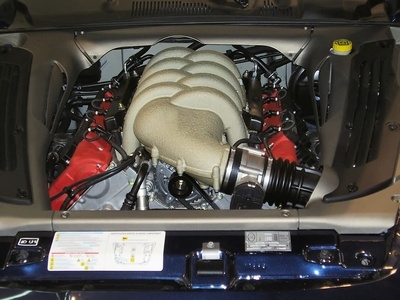
An engine swap involves removing the original engine of a passenger vehicle and replacing it with a different one. The new engine is usually stronger, and the operation aims to increase power, torque and acceleration of the car. An engine swap is a major undertaking and requires considerable expertise along with specialized tools. Even when an engine physically fits into the engine bay, many other issues must be considered or the resulting vehicle may end up not drivable, prone to mechanical failures or outright unsafe.
Measure the physical dimensions of the engine bay. The physical dimensions of the engine you wish to drop into the vehicle must be such that enough space will be left all around the engine bay. Once the engine is securely in place, you must be able to get your hands in to change air and oil filters, spark plugs, the oxygen sensor and all other serviceable parts. The best way to determine if a given swap will work is to study the engine carefully while it is inside its original vehicle. If engineers left ample space around certain areas, so should you.
Estimate airflow requirements. A common problem with engine swaps is not allowing for airflow to the radiators and intake manifolds. The former is crucial to avoid overheating, while the latter is important for maximum horsepower. Also keep in mind that if the engine is tightly squeezed into the engine bay, its cooling requirements will often increase. This must be compensated for by increasing airflow to the radiator. An exact estimate of how much airflow the engine will receive within the new car is impossible without advanced computer models, but studying the radiator placement in the engine's original car is a good starting point.
Determine the maximum power and torque the transmission can handle. If you will only change the engine, but leave the original transmission intact, find out how much torque and power the transmission can handle. If the new engine will likely overwhelm the transmission in the vehicle, you will need to change the gearbox as well, which increases the scope of the project.
Estimate the effect on weight distribution. Start by finding out how much the original engine in your vehicle weighed and how much heavier or lighter the new engine will be. Also find out the percentage of the vehicle's weight originally on the front versus rear wheels. A 50/50 front-to-rear weight distribution is considered ideal, but nearly 60 percent can be on the front wheels if needed. If a larger proportion of the weight is up front, however, you will likely have problems with drivability, tire wear and safety.